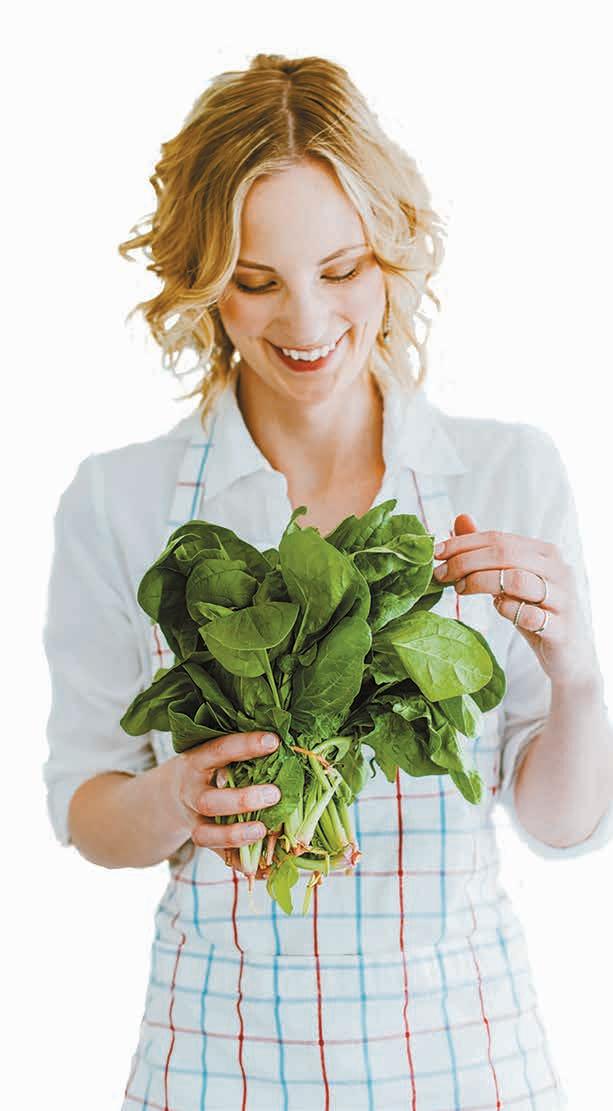
3 minute read
SHERYL DEVORE
from Natural Awakenings, April 2021 Palm Beach County, FL
by Natural Awakenings, Broward and Palm Beach Counties, Florida
Sheryl DeVore on
Appreciating Nature and Wildlife
Advertisement
by Randy Kambic
As we spend more time outside for pandemic safety to exercise and reduce stress, Sheryl DeVore suggests maximizing these experiences by being more aware of the wonders we see and the need to preserve them. The award-winning author of five books on science, health and nature also writes for the Birds & Blooms national magazine, the Chicago Tribune and Natural Awakenings Chicago. With degrees in writing and education from Northwestern University and Northern Illinois University, respectively, plus extensive studies in biology and botany, she assists the Illinois Audubon Society, including writing for and editing a 2019 book on the state’s endangered species.
Is climate change impacting wildlife and nature?
Recent worldwide studies are showing how climate changes affect bird migration times, bloom times of plants and mammal behavior. All of this is interconnected and can harm the environment and the flora and the fauna that live within it. For example, we’re finding that the relationship between healthy oak woods and migratory birds like warblers is being affected by climate change. Warblers time their migrations to pass through regions when oaks are just starting to leaf out. Insects are attracted to the buds and the early leaves, and warblers are attracted to the insects. Once the leaves emerge, chemicals in the oaks deter the insects and there isn’t any food for the warblers. Climate change can cause the oaks to leaf out early, so sergmakssmol/Adobestock.com if warblers arrive on their normal schedule, they’ll find less food and therefore have less energy to make it to their nesting grounds. Plants and animals are trying to adapt in different ways, and this can be a huge issue if climate change continues.
Are there any new trends you’ve noticed in people growing vegetables at home?
Especially during the pandemic, people that have limited space are learning that they can grow their own food at home— growing vegetables and herbs in containers, both indoors and outdoors. Online classes can be helpful in teaching them to grow vegetables such as carrots, lettuce, spinach and peppers, which are great sources for antioxidants and vitamins. This trend coincides with the movement to eat healthier.
Have you seen any changes in how people observe nature during the pandemic?
When I go to forest preserves, parks and nature centers, even in my neighborhood, I have noticed more people, including families with their children, outdoors. Parents can inspire their children anywhere to learn to appreciate nature. Ask a child what kind of tree is in the yard. Maybe they can take a photo or draw a picture of it to create a memory and inspire them to want to learn more. Ask them, “What’s that bug on that plant?” or, “What is the bird that’s singing?” There’s so much for them to enjoy.
What can we do to try to protect and preserve the environment?
Sometimes people think they can’t make a difference as individuals. Small things can make a difference—have a ripple effect. People volunteer to return native habitats to their past, remove non-native species, plant new ones. Volunteers are planting and restoring prairies, woodlands. In your own backyard, you can plant native species or create a butterfly garden or capture rainwater in a rain barrel to water your plants, which will conserve resources. There are so many things you can do with the family.
Why should we care about endangered species?
Endangered species serve as canaries in a coal mine. When their numbers decline, that can be a signal that something is going wrong with the environment. When DDT was widely used in the U.S., the bald eagle and other species began to decline. The DDT thinned their egg shells so they weren’t able to raise their young. They showed us that DDT pollutes and harms the environment, and in turn, humans. By discovering that, by saving eagles, we helped save ourselves.
By protecting endangered species, we truly are saving ourselves. We don’t know what unknown species are out there that might be useful in helping to treat diseases. Anyone who sees an endangered species knows how satisfying an experience this is, and to me, it also translates to a healthier mind and body.
For more information, visit SherylDeVore.wordpress.com.
Randy Kambic, in Estero, Florida, is a freelance editor and writer.





